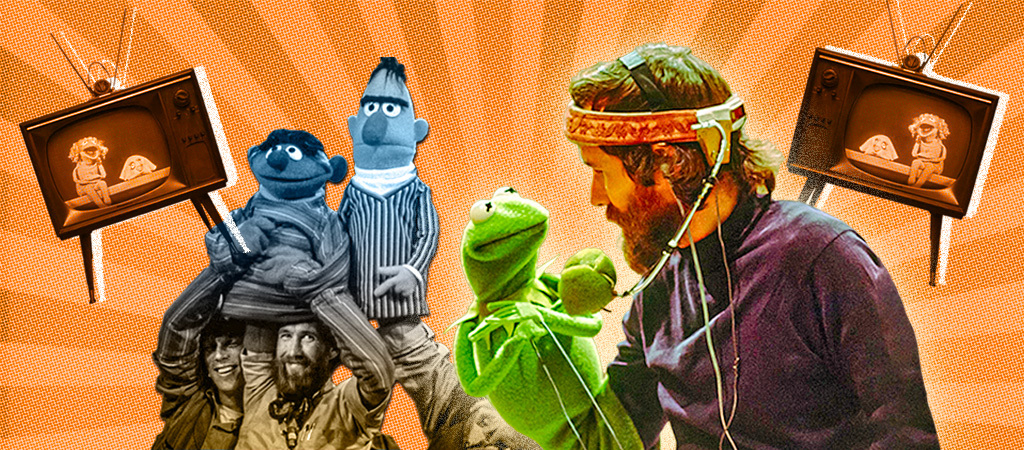Jim Henson’s creations (the Muppets, Fraggles, and Sesame Street gang) remain as those rare kinds of things: shared touchstones as capable of sparking nostalgia in a 35-year-old as they are joy in a 5-year-old. I thought about that a lot while watching Ron Howard’s Henson documentary, Idea Man, which was recently released on Disney+. What does it mean to create something that cuts through generational divides real and imagined? What does it even take to create that kind of thing, or is it not a question of engineering and more something powered by luck?
Howard is, of course, no slouch when it comes to creating great and lasting things. A kid actor, a teen icon, a filmmaker dancing between comedy (Splash) and drama (A Beautiful Mind), fantasy (Willow), reality (We Feed People – a doc about chef José Andrés), history (Apollo 13), and everything in between. And, of course, he’s the narrator who tells us all about the Bluths on Arrested Development. With a career as vast and accomplished as Howard’s, it was natural to ask about similarities he saw between himself and Henson and if there was anything he learned while working on this project.
To be sure, Henson and Howard are different kinds of creative animals. “[Henson] was a total outlier creatively, in terms of where his imagination could take him,” Howard tells me. “I’m a little more grounded in the reality that I can observe, and not so much these sort of abstract notions of the human experience that Jim seemed dialed into.” Still, time and ambition are factors that seem to unite the two. As the documentary shows, Henson was always trying to fit as much as he could into a life that sadly ran short when he died at just 53. Howard, at 70, is beyond prolific and shows no signs of slowing in his ambition or productivity, directing more than 10 projects in the last 10 years. And why would he? Why would anyone if capable and given the chance?
Below, you can read more about Howard’s read on Henson and all the ways he impressed and surprised him throughout his research on this project. You can also gain insight into what Howard thinks this generation of creatives can take from this story and what he thinks Henson, a vocal advocate for the new tech tools of his time, might think about something like AI.
Young creators and people who are just starting out, what can they take from this story and Jim Henson’s work?
Well, one of the things that drew me to the project was when I saw those very early TV appearances and commercials, I thought about the internet because, I mean, TV was the new tech of its moment. And he [Henson] took something kind of traditional, puppets, and found a way to express himself, grab people’s attention in these short formats and sort of build his creative presence, his experience, and an audience through that, using that new medium.
I thought that was incredibly relatable to what a lot of people, millions of people, are trying to do today. And it surprised me. There were a number of things that surprised me, but that was one of them.
What are some of the things that surprised you?
I didn’t realize how experimental he was in his life. I mean, when I saw his home movies, I realized, “Oh my God, those look like those little Sesame Street counting movies.” He was already doing that years before, just playing around in the backyard with his kids. But also the film he made that was so sort of autobiographical, Timepiece. It was so much about his pursuit of all the feelings that a human being has, noble and less noble. And the idea that time was always running out and him constantly saying, “Help,” like he’s drowning in everything that life presented to him as an option. I thought that was really modern, contemporary, and again, informed all the mainstream stuff that we all adore, and that has meant so much to us.
Was it necessary for him to get those more experimental pieces out, do you think, to be able to work in a space where he could accept speaking to a larger audience?
I think Hans Zimmer does this because I’m very close with Hans Zimmer. He’s constantly experimenting musically, sonically, and so forth. And it may be something that he can’t use for years and years and years, or an idea that he has in the back of his mind, and then along comes Dune and he says, “Oh, I can use that thing that this will fit.” I think Jim operated that way. I think he was constantly experimenting.
Maybe it would break through, maybe people would notice, maybe they’d reject it, who knew? But in his own mind, then we bump into something like The Muppets or the Sesame Street opportunity and say, “Hey, I could do that thing like I do with my kids in the backyard. Or I could do that stuff like I did in Timepiece, but I could use it for kids.” But I think that urge to keep sort of breaking new ground, testing the medium, testing himself in ways that ate up a lot of energy, a lot of time, financial resources, but he just kept at it.
And then I think when they were applied to something more conventional, it made it feel fresher and more creatively exciting. So I think there’s a lesson to be learned in just exploring the outer reaches of your creative sensibilities, even if you ultimately want to make broadly appealing popular entertainment.
Is there anything about creativity or imagination that you were able to take away from this?
It was more reinforcing that feeling that you can never know what a project’s value really is based on the way it’s received in a moment. A Dark Crystal, a Labyrinth or The Storyteller or some of these other projects that have suddenly emerged, they’re really memorable in people’s minds. That the lifestyle, the commitment to creative curiosity, follow through… it’s just worth it. It’s just worth it. It just adds up. And it’s a great way of expressing yourself and investing your time on the planet. So I admired that.
I also found it interesting that he was always a little frustrated because he always wanted everything to succeed instantly. Some of it did, some of it didn’t. So he had that vulnerability, even though he was a risk-taker. In his heart of hearts, he wanted to succeed every time. And so I just related to that, and yet really admire his creative courage and his desire to just keep pushing the boundaries.
As the documentary shows, he was very interested in looking at CG as sort of a sandbox for him to play in.
Yeah.
I’m curious what you think he would think about AI.
He would’ve been all over it. He would’ve been all over it. Yeah, all over it. He wouldn’t be frightened by AI at all. He’d just be trying to figure out how to ride the wave. And not for commercial reasons, necessarily, but just for the way it could be used as a tool.
I think that’s the push-pull right now: how can it be used as an additive, versus how is it going to be used as a hammer that’s going to knock down creators? That’s the fight. So yeah, I was thinking the same thing (watching the documentary).
Yeah, I think that’s the question, but it’s important to remember that those algorithms are pushing you toward the average use of an idea. The average expression of an idea. And of course, you can keep prompting and pushing it and so forth, but I think it’s going to be a long time before we don’t need filters, and interpreters like a Jim Henson. No matter what the algorithm feeds, they’re going to say, “Well, I’m not going to go in that direction, but that inspires me to go in the opposite direction.” And I think that’s what we got to keep expecting and pushing ourselves to look to do.
‘Idea Man’ is streaming now on Disney+







